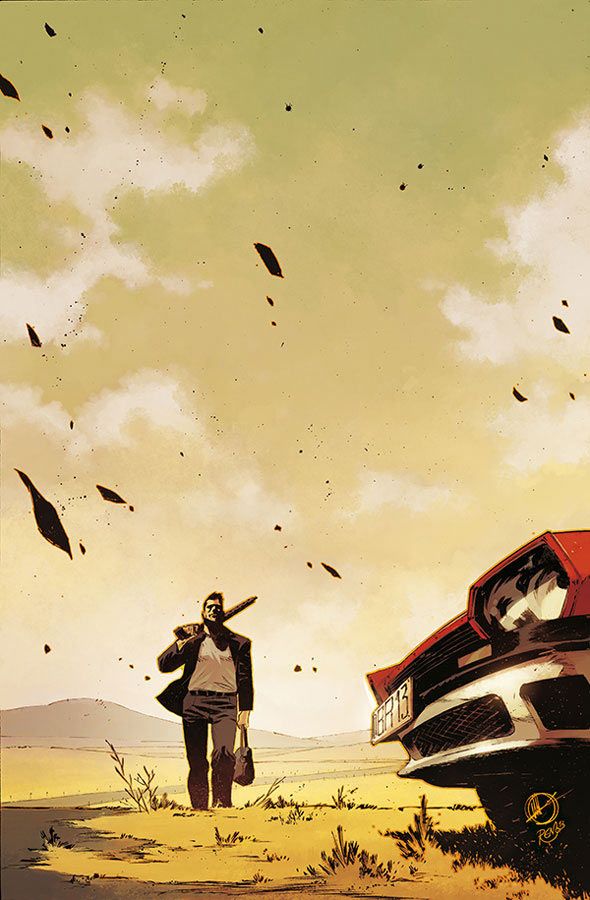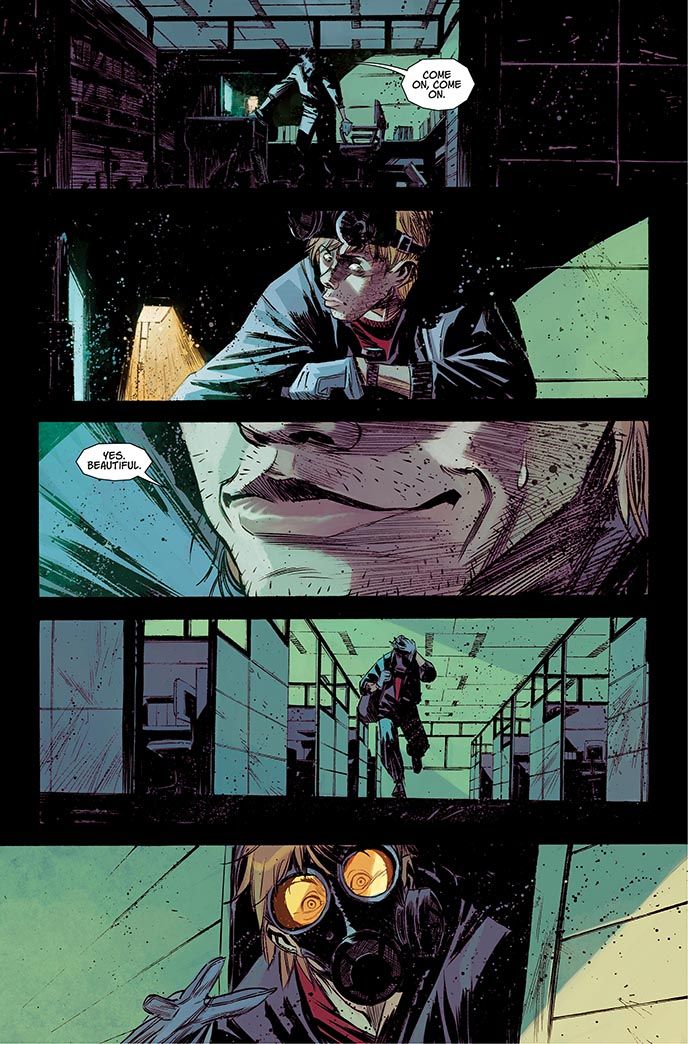When his wife is brutally killed during a bank robbery, former cop Gage finds his sights set on revenge. Filled with rage, the one-time lawman will stop at nothing to track down each and every person involved in his tragic loss and make them pay -- with their lives. His path to vengeance is a twisted, bloody, "Dead Body Road," and it doesn't look like there will be any survivors.
The six-issue Image Comics/Skybound series, written by Justin Jordan with art by Matteo Scalera and Moreno DiNisio, is a stark blend of modern day Western, classic noir and crime drama. The first issue, which hits stores December 11, immediately sets the tone for the series, with dusty, haunting landscapes and gritty steel-eyed criminals drawn by Scalera's clever, talented hand.
Jordan and Scalera discussed "Dead Body Road" with CBR News, sharing their insights on the recent Western renaissance in comics while hinting at what readers can expect from their foray into the freshly burgeoning genre.
CBR News: On the surface, "Dead Body Road" is a revenge story, but what else is happening? What kind of character is Gage?
Justin Jordan: It's not just Gage murdering dudes, although there's that. There are actually bunches of criminal types bouncing off of each other, all trying to accomplish their various goals, which range from just surviving to getting the MacGuffin, [which is] worth millions.
Gage is basically a mass of rage and guilt. He blames himself, not entirely incorrectly, for his wife's death, and he's near suicidal in his dedication to killing everyone that was involved with her murder. As long as he gets all of them, he doesn't care at all whether he lives or dies.
Matteo Scalera: I think Gage's look is amazing, since I created it. In my very humble opinion, obviously.
This seems like a great time to have a Western book coming out, with the success of "East of West" and the just-released "Pretty Deadly." What do you think the appeal of Westerns is? Why was this the right genre for your story?
Jordan: Well, just so long as there are no hard questions. [Laughs]
I think the appeal of Westerns is the appeal of the frontier -- the edge of civilization where the rules are different. Not unlike superheroes or, hell, even opera, the heroes and villains in Westerns are operating at a larger than life level, where the stakes are life or death, and you only have what you bring with you. In real life, that's pretty terrifying, but in fiction, there's an appeal that seems to be relatively timeless.
For this story, I felt like the story of a guy tracking down the people he felt wronged him just felt like a Western. There's the secret to comics, folks -- it's all in the feels. But there was a sense that these people were operating in a space beyond the law, where the police weren't even an afterthought for them. That, too, felt like a Western to me.
Having "East of West" coming out, and a Western renaissance [underway], is just damn good luck for me.
When you began conceptualizing "Dead Body Road," was it always a miniseries?
Jordan: Yep. This is a finite story, with a definite end. So while I will hopefully work with Matteo again, this particular story is all told in "Dead Body Road." No sequels here.
Matteo, how did you come to be involved with the project?
Scalera: I still remember that moment. I was in a hotel room in Seattle. I hear the email alarm. There's an email from Robert Kirkman. First thing I do is looking for hidden cameras in my room, since I thought it was a joke. Then I write him back, and after a few minutes he replies, so I start thinking that maybe it's all real. We start discussing schedule and rating, and a few months later "Dead Body Road" #1 script comes in. Pretty easy and smooth, I must say.
Justin, did you have a clear aesthetic you hoped for with the book? Matteo, what direction was important for you to take with the art?
Jordan: Stark. I wanted a heavy emphasis on black and a lot of open spaces. Kind of like a noir spaghetti Western, if that even sort of makes sense.
Scalera: My main idea for "Dead Body Road" was using a lot of blacks. The story is pretty dark, and I wanted to give that feeling through my art. At the same time, though, most of the story takes place in the open desert, which makes the massive use of the blacks pretty hard. That's my main challenge for this book. Oh, and also drawing real weapons and cars, 'cause I really suck at that. It was fun trying to choose the right kinds of weapon and car for each character, though.
Can you speak to the process of telling this story as a creator-owned work? What has been the most surprising part for you?
Scalera: No big surprise, actually. Lately I'm a lot into creator-owned stuff (I'm also illustrating "Black Science" with Rick Remender), and all I can say is that I really enjoy it. It makes me feel free. It's also fun, 'cause my first US gig ever was a creator-owned book for Image called "Hyperkinetic" with writer Howard Shum.
Jordan: It's pretty awesome. Oh, God, that's a terrible answer.
Creator-owned and work for hire require you to flex different muscles. I can do basically whatever I want, within reason, with "Dead Body Road," and that's both excellent and slightly frightening. Excellent because, hey, creative freedom. But frightening because you have so many options and mostly just yourself to blame if you choose the wrong ones.
Jordan and Scalera's journey down "Dead Body Road" begins December 11.




